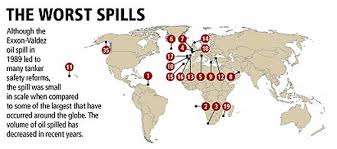Animal cruelty or abuse is when someone
hurts an animal. That could also mean
that they aren’t taking responsibility for the animal for example, not giving
an animal food and water. It’s against
the law to be cruel or harm animals, even your pets.
Neurotic tendencies are common in humans
as well as animals. Abuse or cruelty may
manifest as acute or chronic anxiety, depression, obsessive-compulsive
disorder, phobia, or personality disorder.
Humans and Animals - There is a connection
between domestic violence and animal abuse.
An abuser can control human victims by threatening to do harm to a
family pet. Between 71% and 83%
researchers seen that women that walk into the domestic violence shelters have
reported that their partner has abused or killed their family pet. Families that were under supervision of child
abuse found that 88% animal abuse also took place. Animal hoarding is also animal abuse. It is s neglect because of the unsanitary
conditions and the lack of care towards the animals. Leaving an abusive relationship might bring
fear for the simple fact of the pets safety.
Zoos and Aquariums - Animals kept in zoos are being
controlled in every aspect of their lives.
Where they are caged they have no choice who they share it with and who
to mate with. When to eat and what to
eat. The space they live in doesn’t
resemble or reflect what their natural habitat would look or feel like. Living
in a closed area the animals are experiencing mental health problems that
aren’t observed in the wild. They
develop something called neurotic self-harming behavior.
Zoos trade, lend, sell, barter and
warehouse animals. These types of
actions take them away from the lasting bonds they have with their cage mate(s)
and the staff. They also disrupt their
routine and their social skills resulting in trauma to the animals.
Aquatic animals also develop mental health
problems. A study proved that 90 percent of the public aquariums have shown
that their animals have neurotic behavior.
Circuses- Circus trainers do not use
positive reinforcement for the animals and the animals tend to be scared of not
doing what their trainers demand of them because of the fear of repercussions. Animals are physically punished when trained. Animals are whipped, beaten, and shocked with
electric prods. The instrument favored by
trainers on elephants is the bull-hook. It is used on sensitive areas of the
elephant’s body. Carson and Barnes
trainers have documented using blowtorches on elephants.
Circuses have held a long history of cruel
training because there is little or no Government oversight. The elephants are confined to small boxcars,
trailers, and trucks due to the frequent traveling. They often experience extreme heat, cold and limited
veterinary care. Many circus animals
become depressed and aggressive due to the unnatural confinement and treatment. When elephants have their babies and they are
taken away, which happens often, everything the elephants know from their
natural social instinct kicks in to cause the trainers to discipline them.
http://www.peta.org/issues/animals-in-entertainment/zoos/













